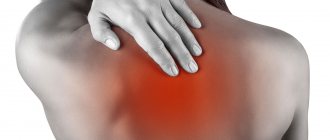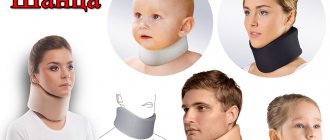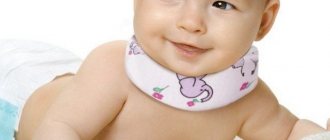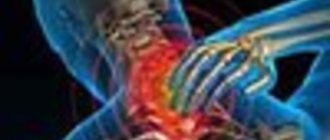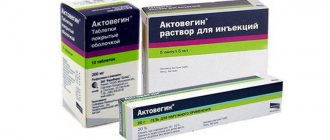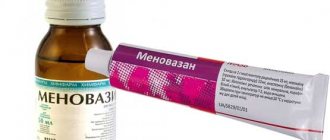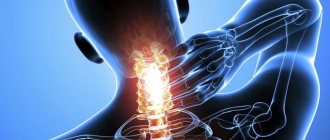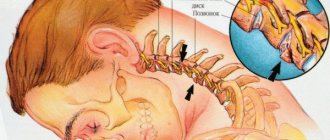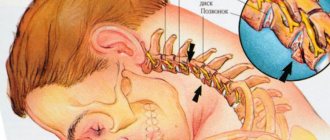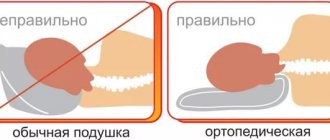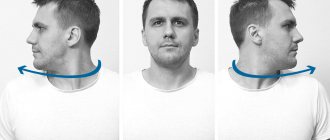Therapeutic effect of the collar
The support provided by the collar is not the only advantage of the orthopedic product. The splint has a therapeutic effect by:
- Improves blood circulation in muscle tissue, joints and skull.
- Eliminate muscle stiffness.
- Preventing pressure from the skull on the cervical region of the spinal column.
- Limitations in rotation, flexion and tilting of the neck.
- Unloading the muscles.
- Warming and massage.
- Stabilization of the vertebrae in a natural position.
The therapeutic effect is due to the complex action. Doctors prescribe an orthosis for any pathology of the cervical spine: muscle spasms, sprains, injuries, discomfort.
Cervical orthoses are used to treat injuries and diseases of the cervical spine, as well as in the postoperative period. The use of orthoses is indicated for painful muscle spasms and severe vertebral instability.
The purpose of orthosis is to eliminate instability of spinal segments, fractures of vertebral bodies and arches, reduce pain and muscle spasm in osteochondrosis and other diseases. To achieve these goals, orthoses must provide the necessary unloading of the cervical vertebrae and limit their mobility relative to each other, and correct the position of the head.
In most cases, in outpatient and inpatient care for injuries and diseases of the cervical spine, a cotton-gauze collar “Schanz type” and a plaster cranio-cervico-thoracic bandage are used.
In recent years, as a result of the development of design developments and the emergence of modern polymer materials, ready-made orthoses (orthopedic collars) of both rigid and soft fixation have appeared, manufactured by various foreign and domestic companies and prosthetic and orthopedic enterprises.
Based on the experience of using various cervical orthoses in 3016 patients, we summarized the indications for their use and the dependence on the level of damage to the cervical segments and the nature of the pathological process.
Various types of cervical orthoses were used, which we divided according to the location of the position into four types:
- Soft fixation cervical orthosis;
- Craniocervical orthosis, rigid cervical orthosis and craniocervical orthosis with frontal fixation, individually manufactured from polyethylene foam (PEF);
- A splint for fixing cervical vertebrae (CITO type) and a metal-polymer half-corset with a head holder;
- Cranio-cervico-thoracic (“Halo”) device.
It is possible to reinforce the front or rear fragment with rigid plates made of polyethylene or metal.
It is used for bone-destructive changes in the upper and mid-cervical spine. After operations on the cervical spine, when rigid fixation with limited flexion, extension and rotation is necessary.
Used for transport immobilization in victims with unstable spinal injuries; in the preoperative period in patients with instability of the cervical spine.
In order to classify various types of orthopedic collars and develop medical indications for their use, we conducted a study of the range of motion in the cervical spine when it was fixed in various cervical orthoses (Table 1). The studies were conducted on ten healthy men aged 18 to 42 years. The range of movements was determined in three planes: horizontal (rotation), sagittal (flexion - extension) and frontal (lateral bends). Measurements of the range of motion were determined using a protractor and a ruler rigidly fixed parallel to the upper jaw of the subject.
conclusions
A soft-fix cervical orthosis provides slight traction due to the properties of the material and is convenient to apply, however, it is ineffective in limiting movements.
Increasing the stiffness and length of a cervical brace improves its ability to limit motion, lateral flexion, and rotation, including the entire cervical spine. Cervical flexion and extension were not completely eliminated in any of the cervical orthoses with the exception of the Halo device.
Fixing the cervical orthosis with rigid plates to the semi-corset along the anterior and posterior surfaces reduces the phenomena of rotation, flexion and extension in the upper thoracic spine. Movements in the sagittal plane in the upper parts of the spine did not depend on the use of a semi-corset and were the same as in craniocervical orthoses. Increasing the lateral side of the cervical brace with the addition of a segment surrounding the head at the top (the “halo”) significantly reduces mobility in both the sagittal and frontal planes. Maximum reduction of movement is possible only with fixation through a “halo” with rigid fixation with metal rods for a corset or semi-corset.
Indications for use of the bandage in adults
It is advisable to prescribe an orthosis in the presence of diseases:
- Rehabilitation after injuries and operations.
- Arthrosis.
- Neuralgia.
- Posture disorders.
- Migraines and dizziness due to muscle spasms.
- Myositis.
- Osteochondrosis.
- Curvature of the spine.
- Instability of intervertebral discs, hernia, portusia.
- Periarthritis.
The splint is used for scoliosis and other spinal defects. The product fixes the pathological area in the correct position and corrects the deformation.
Indications for prescribing splints for children
The universal orthosis is used for adult patients and infants. When additional neck support is needed in infants:
- Birth injuries of the spine.
- Pain in the neck.
- Cerebral circulation disorders.
- Cerebral palsy.
- Spondyloarthrosis.
- During physical therapy.
- Pathologies of the ligaments and muscles of the neck.
- Congenital torticollis.
- Osteochondrosis.
- Rehabilitation after treatment of congenital torticollis.
- Traumatic injuries.
- Myositis.
The decision about the need to correct the spine using a bandage is made by the doctor. Independent use of an orthopedic product without a medical prescription is unacceptable. Improper use of the cervical spine can lead to muscle atrophy.
The list of indirect indications includes:
- Musculoskeletal disorders.
- Short neck.
- Pathologies of the central nervous system.
- Excessive excitability.
The bandage will relieve the neck from excessive stress, correct various deformities and relax the muscles.
Characteristics of the orthosis
The effectiveness of wearing a bandage depends on the correct choice. Below are the criteria for choosing a corset:
- Dimensions. Manufacturers offer standard sizes for adults and small patients, and lines for young children.
- Degree of fixation. There are soft, medium and hard fixation bandages.
- Height. It is selected taking into account the patient’s neck circumference. The standard height of the orthosis for adults is from 8 to 12 cm, for children – 3-5 cm.
- Weight and age. Orthopedic products are selected taking into account the weight and age of the baby.
Orthoses are sold in specialized orthopedic salons. The device is made of certified hypoallergenic materials.
Correct Application Technique
When using the orthosis, careful hygiene must be observed. The skin must be washed and wiped dry. There is a recess for the chin along the upper edge of the product. The clasps on the back of the product ensure a secure fit. The collar is worn on a bare neck.
When using the device, the patient experiences slight compression. Strong compression can cause compression of blood vessels and lead to dizziness. Weak fixation, on the contrary, will not give the desired result. When worn correctly, you can place your finger under the collar.
Duration of wearing
The duration of use of the collar depends on the clinical picture and is determined by the doctor. If it is necessary to sleep in a collar, use an orthopedic pillow. It is advisable to wear the product during periods of physical activity. The therapeutic course ranges from one month to six months.
Collar care
Any medical device needs care. The neck corset is no exception. If the product becomes dirty, wash it with liquid detergent and warm water. After washing, the corset is rinsed and dried naturally.
Do not use drying devices to dry the product to avoid deformation.
The Shants bandage is an effective orthopedic device that can eliminate discomfort in the neck and cure a wide range of diseases. It is used after consultation and clinical examination by an orthopedist, neurologist or traumatologist.
How can the Shants collar help with cervical osteochondrosis?
One of the methods of treating cervical osteochondrosis is wearing a Shants collar. What is it? This is a device in the form of a soft bandage that slightly fixes the cervical spine. In order for the treatment not to be in vain, and, moreover, to be effective and successful, there are some rules for using the product that must be strictly followed.
Rules for using a collar
First, it is necessary to note an important point: the Shants collar is prescribed only by a doctor. Under no circumstances should you prescribe a product to yourself.
The device itself is empty rings that need to be inflated using a bulb. In general, the first few pumpings should be carried out by a specialist, so that the patient can understand from his example how this is done correctly.
A common problem people have is that, having bought a collar, they have no idea about such things: how to use the product, what the duration of treatment is...
After all, there are some rules of application:
- It makes no sense to wear a collar all the time, especially once it has been purchased. To get started, 5 minutes is enough. You also need to learn how to inflate the device.
- The collar is inflated slowly so as not to spoil the ring structure.
- The product should be put on in a sitting position and in a relaxed position.
- The duration of one wearing procedure is up to 30 minutes a day, initially from 5 to 10 minutes.
- The duration of treatment is 30 days.
The collar itself helps relieve tension in the cervical region, but has some side effects:
- sometimes there may be impaired consciousness and headaches;
- weakness, lethargy;
- runny nose.
Cervical osteochondrosis requires a specific attitude, and this product should not be used incorrectly.
How does head position affect the development of the disease?
Incorrect head position is often the cause of the development of cervical osteochondrosis. As a rule, people whose professional activities involve having to take an uncomfortable position or change positions infrequently (for example, truck drivers) suffer from this. Those who like to sleep while sitting also come here. This occurs due to the fact that the head is in an unstable position, destroying the structure of the cervical vertebrae. The blood supply to the brain may be disrupted.
If you bow your head to your chest, then no such violations are observed. But this position is also incorrect, as it can cause pain after waking up.
The position when the head is tilted to the side is also not normal, since compression of the thoracic artery of the spinal column may occur, which again leads to impaired blood flow to the brain. If you stay in this position for a long time, the development of cervical osteochondrosis becomes very likely.
But the most dangerous position is a completely tilted head back, and in such a situation the level of brain trophism decreases as much as possible, and, in addition, the risk of ischemic stroke increases.
If there is a professional need to remain in one position for a long time, the Shants collar can be a warning against illness.
Impact of the collar on disease
The advantages of the device in terms of its impact on humans include:
- Stopping pain;
- Reducing the load on the spine;
- Elimination of tissue swelling and muscle contractions;
- Possible strengthening of the muscles of the cervical and spinal region due to the fact that the person stops slouching, although at first some discomfort is quite likely;
- Normalization of blood supply in the cervical arteries, since the product keeps the head in the correct position while being worn;
- Resumption of normal sleep and a person’s mood, since the pain stops, and with it the well-being improves.
Author: K.M.N., Academician of the Russian Academy of Medical Sciences M.A. Bobyr
